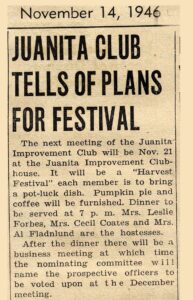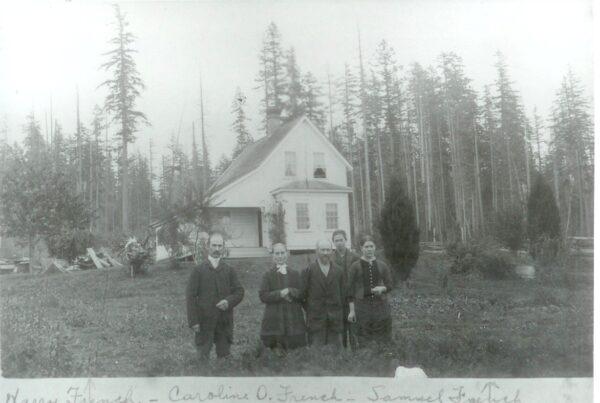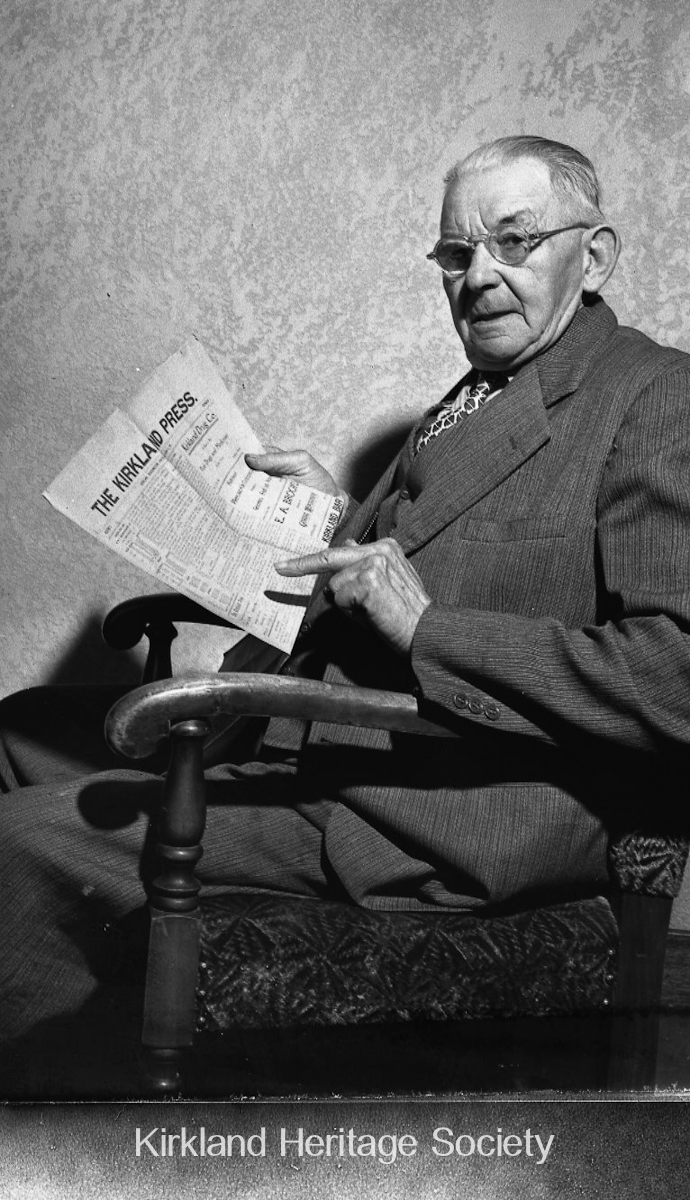
There is a saying, oft repeated, that if you want something done just tell the ladies about it. When looking back into the Juanita Improvement Club we find the beginning involved four groups of ladies who used to meet separately for a monthly social gathering—to have lunch, chat, knit, crochet and get caught up on darning , the socks. These groups finally decided to join forces and met in the old Woodmen Hall which is now the Juanita Community Church.
When it was decided their own clubhouse was needed, the women gave fairs, bazaars and minstrel shows. Mr. Tronsrud donated the land and $1200 worth of lumber was donated (by someone whose name is lost in the past). The labor was donated by the husbands. Mr. Hartig and two other men broke the ground with team and horses in 1917 and the clubhouse was begun. Many of the men who helped in the actual building were Ed Nelson, W. Curtis, Jim Carr, Ted Griffith, R. B. Littell, Ed Watson and Frank Berg, and doing the painting were Earl Hough and Mr. Hauckland. Others were: Sam Blakelin, Roy La Rue, Charles Nelson, Monroe Hartig, Clyde Miller, Harry Langdon, Leslie Forbes, George Robins, Aken Pheordahl, Olaf Jostin, Frank Morgan, Sheldon Harden-brook, Ben Koziki, Hugo Dicker-man, Lawrence Nelson, Carl Niese and Isaac Stoor helped nail down the floor and T. W. Avis worked on the shingling for
the roof.
Probably many more drove nails and hauled wood but your reporter was unable to find any written records—just the memories of residents. Another man who in later years was a big help to the community club was Jack Galvin, who when setting out on some project always got it done.
A group of the first officers were Ted Griffith, president, Minnie Langdon Sabo, treasurer, and Liberty Hartig, secretary—all still living in Juanita.
One of the big events at the clubhouse was told by Mrs. Leslie Forbes who happened to chairman the affair in the early ’20’s. Governor Hartley was invited as a special guest and a big dinner was planned in his honor. Ed Nelson took charge of building a lot of extra tables for the event. Over 300 people were served chicken dinner.
With one of the best floors on the Eastside, dances were a regular event, interspersed with minstrel shows and country fairs. Many of the people who organized the club are still active members.



